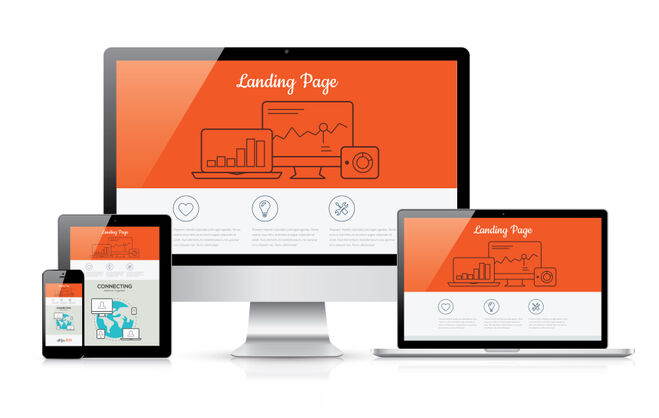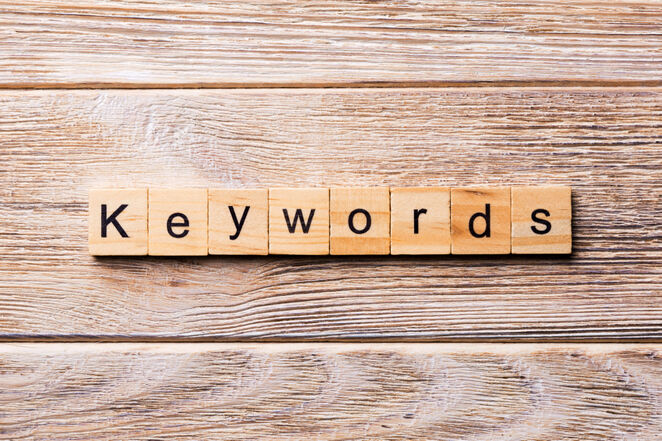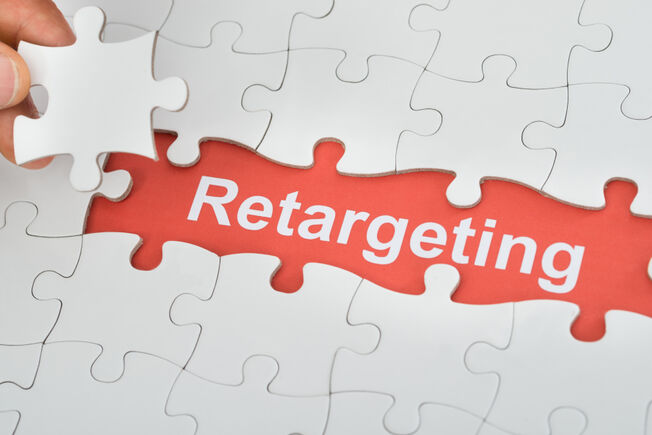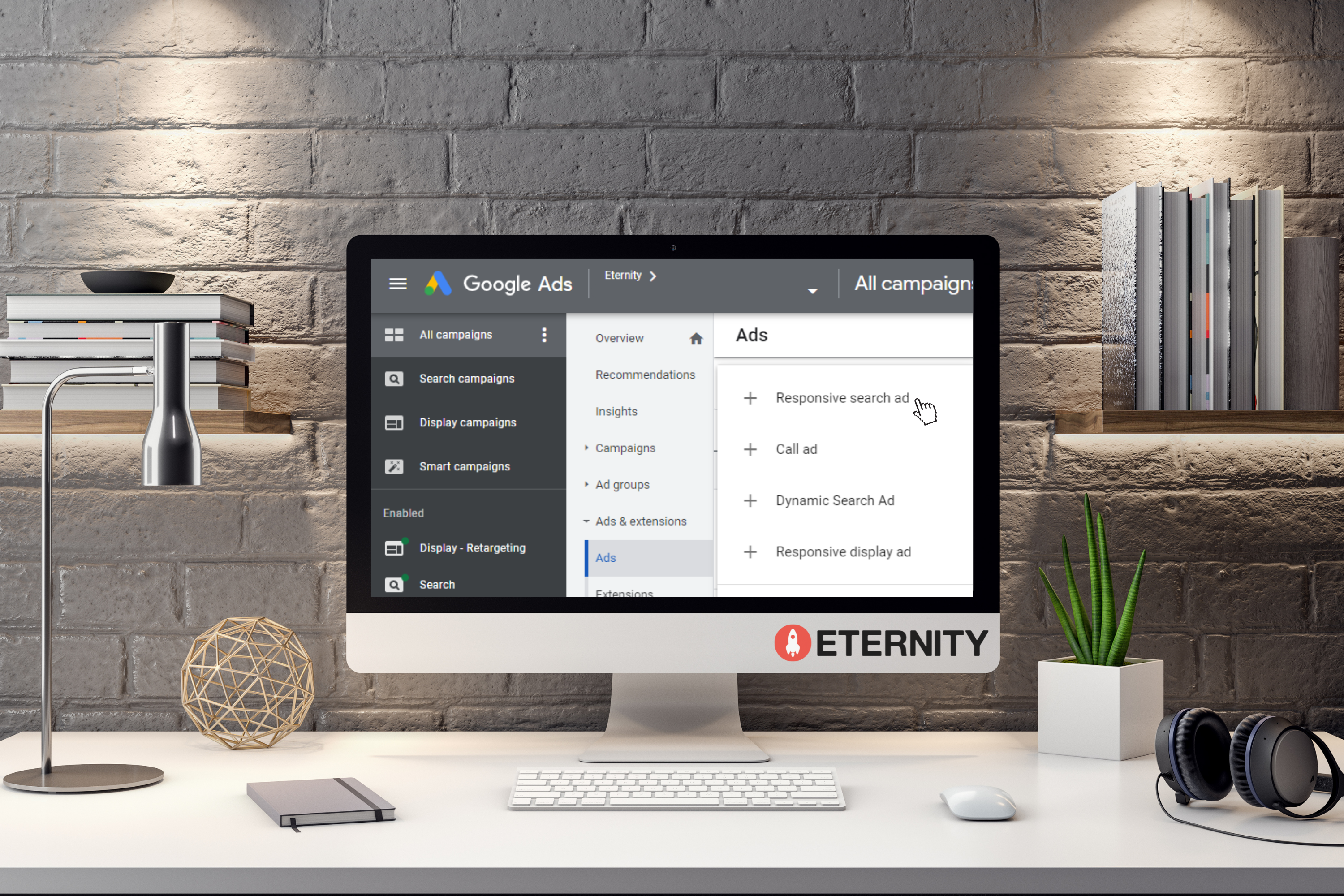When was the last time you Googled something? If you're like many of us, it was probably today. The average person will conduct a Google search three or four times per day. Within every search is the opportunity to create a connection with a potential customer using a carefully curated Google Ads campaign.
Effective Google Ads campaigns are some of the most powerful tools a business can use to reach its existing customers and attract new ones. While there are plenty of facts to back this bold claim, here are some of the biggest:
- Google controls over 90% of the search engine market share worldwide.
- Users who visit a website through Google Ads’ pay per click (PPC) ads are 50% more likely to make a purchase than those who come via an organic search. In fact, 90% of websites don’t get ANY organic traffic from Google.
- For every dollar a business spends on Google Ads, they make an average of $2 in revenue.
With numbers like these, it’s easy to see why so many businesses are using Google Ads (over 1.2 million and counting). All ads are NOT created equal though, and there are things you can do to improve your Google Ads performance today.
Jump to Section
- Make An Impression With Powerful Ad Copy
- Optimize Your User's Landing Page Experience
- Fine Tune Your Keyword Strategy
- Re-Engage Your Customers With Retargeting Campaigns
- Ad Extensions - Powerful Tools In Your Google Ads Toolbox
- Keep Things Fresh With Ad Rotations & Responsive Search Ads
We’ll explore these techniques and help you improve your quality score, ad copy, keywords and landing pages, and help you optimize your Google Ads account.
Make An Impression With Powerful Ad Copy

Once your ad appears on search engine results pages, it’s up to the ad copy to engage your target audience and make them click your ad. There are plenty of things you can do to make your ads compelling to your target audience:
Write Your Ads In Capitalized Case
That means that every word in your ad should start with a capital letter, even the little ones like “Of” and “And”. If you think this sounds weird, go to Google and search for anything at all. Most, if not all of the results will come back with ads written in capitalized case, because this is what works.
Include Emotional Triggers In Your Ad Copy
Create a sense of urgency, spark curiosity, surprise, happiness, or outrage - whatever emotional reaction works best for your brand and allows you to use your Google Ad to create that connection with your customer.
Speak To The User’s Intention In The Headline
“Order Your Tickets” or “Reserve Your Campsite” or “Apply Online” - use your ad copy to directly show a solution to their pain point.
Use The Ad Url As A Means To Promote Your Product
When creating a Google Ad, there's a space to input the address of the landing page that a user will go to when they click your ad, and another area where you can input what’s called a display path. The display path is tacked on to the domain of your final URL, helping the user know what to expect when they click on your ad. This allows you to show “example.com/affordable/patio_furniture” as the address of your page, letting people know what to expect when they click that specific ad.
Optimize Your User's Landing Page Experience

One of the most effective things you can do to boost your Google Ads quality score and enhance ad relevance is to optimize the landing pages people connect with through your ad campaigns.
First and foremost, it’s imperative that you make sure your landing page is mobile friendly. 95% of paid ad clicks come from mobile searches. Your highest performing ad could be showing at the very top of the search engine results page, and if a smartphone user clicks on your ad and your site isn’t performing properly for mobile devices, they will return to the search results and spend their money elsewhere.
It is crucial to ensure your ads take visitors to landing pages that are specifically relevant to their queries. A high quality ad should include an ad copy that corresponds with the search term a user has entered into the search engine, as well as a landing page that closely relates to both.
Google is going to evaluate your ad by how long a user was on your landing page after clicking on your ad. If they leave right away, it will increase your bounce rate and hurt your quality score. A well crafted ad matches the page it's written for, reducing the bounce rate and improving the quality score of the ad.
Be absolutely certain that your landing page loads quickly. Keep in mind that the user selected your ad out of a number of other alternatives; if the landing page doesn't load promptly, there are numerous alternative search results to choose from.
Fine Tune Your Keyword Strategy

Get The Most Out Of Your Targeted Keywords And Negative Keywords To Ensure You're Reaching Your Target Audience
Keywords are the backbone of all paid search campaigns, and successful PPC campaigns are directly dependent on having high quality, relevant keywords.
It's important to keep a close eye on the number of keywords in each ad group. If you have more than 20, it'll be harder to match the ad text to the keywords and your ads will be less relevant. If you find you do have more than 20, create a new ad group based on a specific keyword theme.
Check the performance of your keywords on a regular basis. When you find the ones that are underperforming, pause them, especially if they’re bringing traffic that doesn’t convert. When you find an exact match keyword that’s doing really well, try switching it to a broad match (keeping a close eye on it!) to see if you can generate some new ideas for ad groups.
Don’t be afraid of long tail keywords! 92% of all search queries are long-tailed keywords. Long tail keywords are more specifically targeted and less competitive than shorter, more common keywords - think “waterproof navy blue ski jackets for men” as opposed to “men’s coats”. While these will generate less traffic, the traffic that they do bring in will be closer to the bottom of the marketing funnel.
Need help finding the right keywords for your PPC campaign? There are plenty of tools available! In addition to Google’s own Keyword Planner Tool, SEMRush’s Keyword Magic Tool, and SpyFu’s Keyword Research are great resources that can help you discover new keywords.
You’ll also want a carefully curated negative keyword list so that Google knows what NOT to show your customers. Negative keywords will help keep your ads from showing for irrelevant queries, which will improve both your quality score and click-through rate, ultimately lowering your cost per click and overall ad spend.
There are plenty of ways to come up with negative keywords. To begin, think like a customer - Google what you think someone looking for your product would search for using search terms that make sense to you. What’s coming up in autocomplete suggestions that isn’t relevant to you? Add these in as negative keywords.
Google’s Search Terms Report will show you searches that triggered your ads, along with other metrics such as your click-through rate and conversion rate. Not only is this a great way to discover negative keywords, but it can also help you discover long-tail keywords that you may want to add to an ad group.
Using the Keyword Planner Tool while looking for relevant keywords? Keep your eye out for search terms that aren't relevant to you and add them as negative keywords.
Re-Engage Your Customers With Retargeting Campaigns

Retargeting campaigns are a great way to remind potential customers that you exist, which is why they are an essential part of PPC campaigns. Only 2% of leads will convert the first time they visit a website, because most people use the internet to do research on a product or service before making the purchase. A retargeting ad campaign targets users who have been to your website within a specified time frame, and is a very effective way to familiarize them with your brand, products and services.
Google Ads gives you the option to create a Responsive Display Ad, where you upload images and ad copy, creating a pool of assets to choose from in order to build your ad. Google will pull from this asset pool to construct an ad, and adjust the size, appearance, and format of the ads to fit the space of the screen where the ad is being displayed.
If you prefer to have more control over your display ads, you are also able to upload your own, pre-made display ads. If you go with this option, there are plenty of tools available to make sure you’re uploading ads that will fit every device. Bannersnack allows you to make any sized display ad you need. You’re able to create one at a time, or choose to create an entire set of ads at once. This is a great option because it keeps your ads cohesive by using the same elements for each ad, and allows you to customize each individual ad.
Ad Extensions - Powerful Tools In Your Google Ads Toolbox

Ad extensions add a LOT of value to your Google Ads and you should be using every possible relevant one. You can apply them at the account level, the campaign level, or the ad group level. Ad extensions expand the real estate that your ad takes up on the page and are a great way to highlight what makes your company stand out from its competitors. Here are some of our favorites!
Image Extensions
Image Extensions are photos that are shown in your ad. You can upload images directly to Google Ads, or choose the option to have Google scan your website to find photos to use for your Image Extensions. Images are a great way to draw attention to your ad while making it more visually appealing.
Sitelink Extensions
Sitelink Extensions are additional links in your ad that take a user to specific web pages on your site. They are a great way to draw attention to the parts of your site that you want to highlight - for instance, a sale or promotion, your hours of operation, or a place to make a reservation. They can be edited easily without losing performance data of the ads they are displayed with.
Callout Extensions
Think of Callout Extensions as additional headlines for your ads. What’s exciting or unique about your business? Use Callout Extensions to shout it from the ad! You have 25 characters to work with for each, and Google will show between 2 and 6 Callout Extensions in addition to the text of your ad when your ad is displayed. Callout Extensions are also easily edited - a great way to keep your ads fresh and up to date.
Structured Snippet Extensions
Structured Snippet Extensions highlight specific details of your business for a customer before they click on your ad. These extensions can really improve your CTR by presenting this information up front. For example, you can create a new Structured Snippet Extension with the header "Destinations" and then list out the areas you serve. This way when a user searches for "trips to San Francisco'', the structured snippet will let them know that they can get there with you, even if it’s not mentioned elsewhere in the ad. This increases the chance that they will click on your ad.
Call Extensions
Call Extensions are a no-brainer for businesses that are looking for phone calls from customers. If a user is searching on mobile, Call Extensions offer a clickable button that allows them to immediately make the call directly from the ad. Call Extensions can be scheduled to appear only when your business is open. Of course, if you are using a Call Extension, it’s important that the customer has a nice experience when they phone in to your business.
Location Extensions
Location Extensions tell your customers where you’re located. If you have a physical location that you want people to come to, you should use Location Extensions. It goes without saying that keeping this information current is imperative.
Keep Things Fresh With Ad Rotations & Responsive Search Ads

Who among us hasn’t gotten sick of a commercial after seeing it multiple times? No one wants to see the same ads over and over again. The last thing you want to do with your ads is to bore people, and one of the ways to avoid this is to keep them fresh.
There are certain times when it’s natural to rotate your ads. If you have products or services that change with the season, it makes sense to rotate your ads as your offerings change. Are you doing a big sale or promotion, such as back to school sales? Make some new ads to let your customers know. Is your inventory increasing? Perhaps you’re a breeder with an upcoming litter, or a car dealership who is about to get the next year’s models? This is a perfect time to write new ads!
Google, in its infinite wisdom, is kind of doing this already. With Responsive Search Ads, Google selects well-performing options from a list of headlines and descriptions you give them, mixing them up to create different ads. For each Responsive Search Ad, you are given space to enter 15 headlines and 4 descriptions. When writing these, you’ll want to make sure that the headlines and descriptions make sense in any combination, as Google will be mixing and matching them to see what works best.
Let's Connect
The most certain truth about Google Ads is that they are constantly changing. Even with billions of searches per day, 15% of searches are brand new, never before seen queries, each of them an opportunity to connect with the person who is conducting the search. By following these simple steps, you can increase the likelihood that the connection a potential customer makes will be with you! If you’d like to explore your options for digital marketing campaigns with Eternity, or simply say hello, please reach out!



